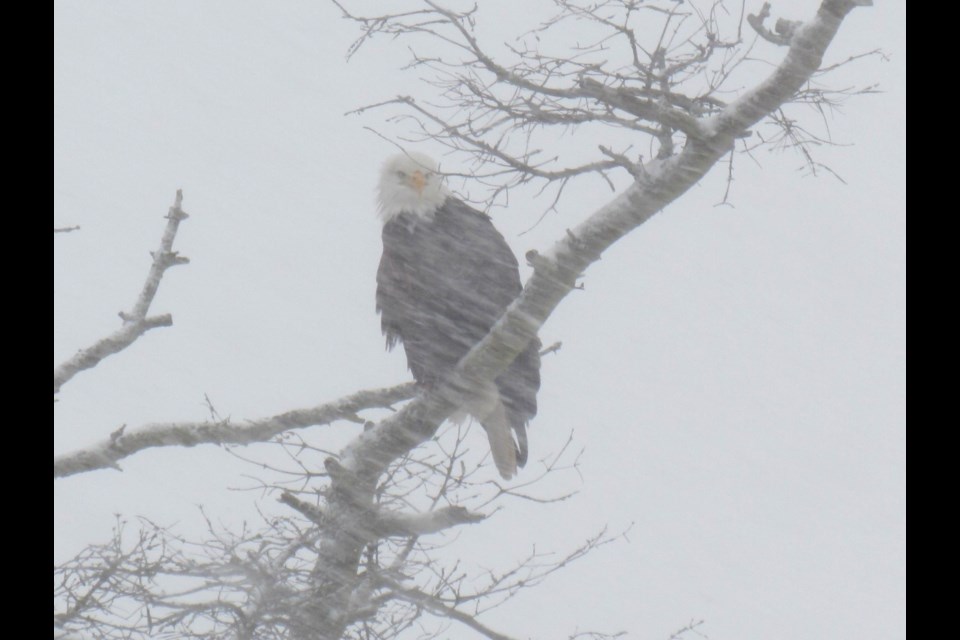The Ladner Christmas Bird Count is an annual survey of birds within a 24 km diameter circle centered on Delta, with areas extending into Point Roberts, Richmond, and Tsawwassen.
The Count Day on Sunday, Dec. 18 was shaping up to be a record year for participation, but the weather had other plans. Snow, strong wind and sub-zero temperatures turned into near white-out conditions by mid-day.
Many birders opted to stay home, and very few are fortunate enough to live in the circle where they could count birds from their backyards.
Remarkably however, 68 people managed to brave the conditions and were rewarded with a taste of what many Canadians experience on CBCs everywhere other than our mild slice of the Lower Mainland.
The birds of course were still out there, and the inclement weather caused many species we don’t normally see in high numbers to congregate, which is reflected in the totals.
A total of 133 species of 146, 825 individuals were found on Count Day, which was two more than last year conducted under ideal conditions.
The standout highlights of Count Day were the long-staying American Avocet near the base of the Deltaport Causeway, a Redhead in Point Roberts, and no less than seven California Scrub-Jays in Delta and Richmond, on the heels of the greatest irruption the region has seen for this species earlier in the year.
Waterfowl in general, with the exception of Snow Geese, were detected in higher numbers probably due to the poor weather. Raptor and owl numbers were down hopefully as a result of reduced effort. The same can be assumed for most songbirds, almost all of which were in lower numbers compared to previous years.
The influx of Varied Thrushes was a treat throughout the holiday season in the Lower Mainland. Other notable species not observed every year included Greater White-fronted Goose, Tundra Swan, Eared Grebe, Western Gull, Red-breasted Sapsucker, Townsend’s Solitaire, and Harris’s Sparrow.
This year, birders found seven additional species during Count Week (the three consecutive days prior to and three days following Count Day), which was three more species than last year. Some of the Count Week goodies included Ancient Murrelet, Rhinoceros Auklet, Snow Bunting, American Tree Sparrow, and Northern Waterthrush. The most surprising species missed on Count Day were Lesser Scaup, Mourning Dove, Hutton’s Vireo, and Lincoln’s Sparrow.



